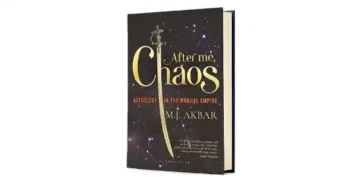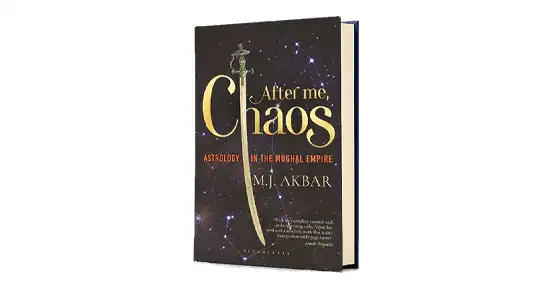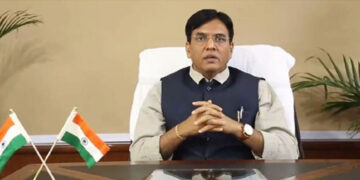Blitz Bureau
NEW DELHI: Aurangzeb trusted Fazil Khan. He was the intermediary during his tense negotiations with Shahjahan after he had usurped power in 1658. Fazil Khan was promoted to the august position of vizier a little before his death in 1663. Aurangzeb had inherited a powerful tradition from his forefathers.
Christopher Minkowski writes: Evidence from contemporary Persian chronicles makes it clear that the Mughal rulers employed Hindu astrologers, giving them the title of Jotik Rai, or in Sanskrit, Jyotisraja, king among jyotisas… Some evidence suggests that the Jotik [Rai] would travel with the emperor during military expeditions. It was the Jotik Rai’s job to cast the birth chart of members of the royal family according to the jyotisa system, to answer questions according to the prasna, the jyotisa version of catarchic astrology, in which a chart is cast for the moment that the question was asked, and to choose favourable moments to undertake activities, according to the jyotisa system of muhurta. These experts in the ‘astral sciences’ produced divination texts and advised their royal clients on daily routine as well as plans for life and for action, both personal and political.
THE CORONATION>
Astrologers had the last word when Aurangzeb took the crown. On 12 May 1659, Aurangzeb entered Delhi to the sound of drums, pipes and trumpets, followed by bejewelled, caparisoned elephants and cavalry, musketeers, rocketmen and his servants flinging coins to the populace on either side. He then waited for twenty-four days: ‘The court astrologers were of opinion that Sunday 5th June 1659, was a most auspicious day, and all arrangements were made for Aurangzeb’s enthronement on that day,’ writes Jadunath Sarkar. They specified the time: three hours and fifteen minutes after sunrise.
Aurangzeb, with cool but calm eyes, arrived early in the morning on 5 June, seated on the loftiest elephant. All the treasures of the dynasty were on display inside the fort. The ceilings and the forty pillars of the Diwan-i-Am were draped in brocades from Gujarat, gold-and-silver cloth from Persia, embroidered velvet, European screens and gold tissue from China and Turkey. The court waited for a signal from the soothsayers.
The astrologers had declared 3 hours and 15 minutes from sunrise as the auspicious moment. The whole court anxiously hung on the lips of the astrologers, who keenly watched their [water] clocks and sandglasses. At last they gave the signal; the precious moment had arrived; the Emperor, who had been sitting dressed and ready behind a screen, entered the Hall of Public Audience and mounted the throne. This was, technically, Aurangzeb’s second coronation. The first, in July 1658, a brief ceremony at Shalimar Bagh, was a necessary assertion of power in the vacuum left after Shahjahan had been dethroned. According to Muhammad Kambu, the astrologers had identified 21 July 1658 as the auspicious day.
Fear of the unknown made Aurangzeb an ascetic in 1665 when a ‘very large’ comet appeared for four weeks. Aurangzeb stopped eating meat, reduced his meals to a minimal amount of millet bread and water, and slept on the ground with only tiger skin as cover. A comet was a dangerous omen for kings.
Astrologers determined the date and time for both crucial occasions. The emperor, who lived by the letter of Islamic law, often against the spirit of Islamic doctrine, in effect ignored the Quranic injunction in Surah Yunus, Verse 101: ‘Behold all that is in the heavens and on earth, but neither signs nor warnings profit those who believe not.’ Faith has its variations.
In 1658, Aurangzeb was realistic enough to stop short of claiming full sovereignty. The khutba was not read in his name. A painting, dated circa 1660, now in the St Petersburg Album, shows a young, olivecoloured Aurangzeb bathed in a shaft of heavenly light, seated on a cushion and facing two princes. There is a small box and a rudra veena at his side.
The pomp and circumstance of the second coronation and his persona as emperor belie the cultivated image of Aurangzeb as an abstemious ruler who disdained the glamour of a king and lived on the earnings of pious activities like sewing prayer caps. The jewel merchant Jean-Baptiste Tavernier (1605-1689) saw Aurangzeb drink water from a rock crystal cup with a gold cover and saucer enriched with gems; the credulous were told that he never used vessels of gold and silver.
Aurangzeb’s faith in astrology is confirmed by [François] Bernier, who was part of the royal entourage the previous year.
































